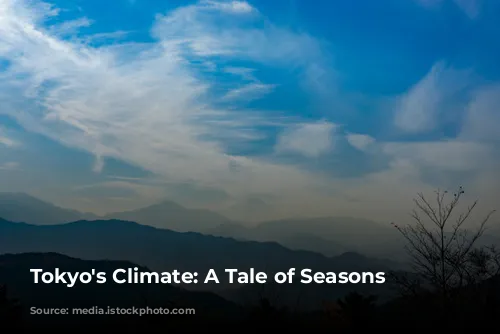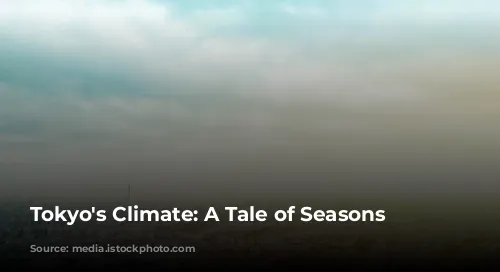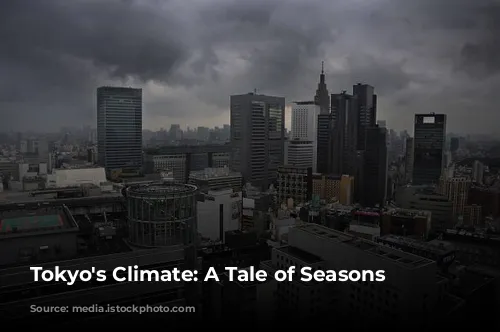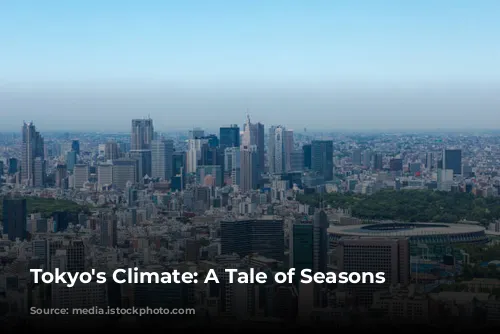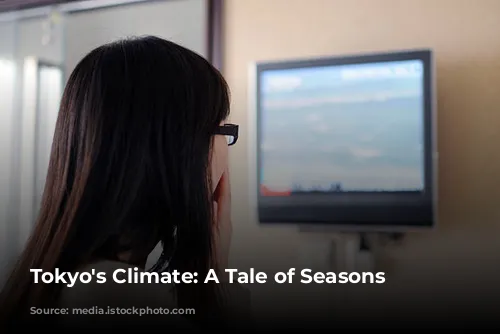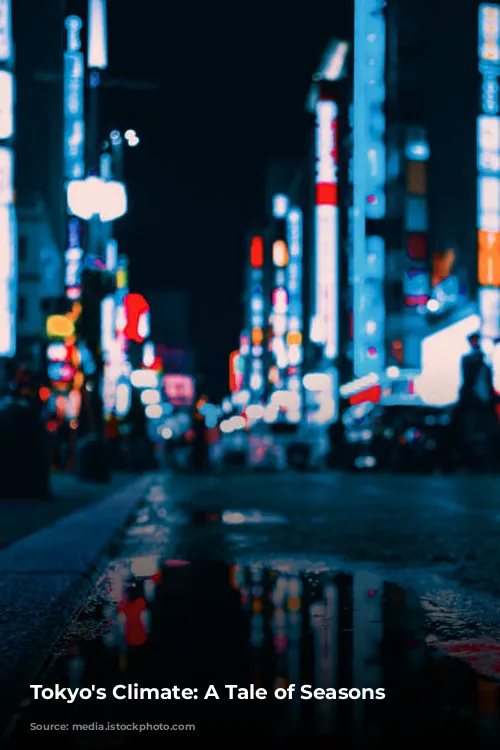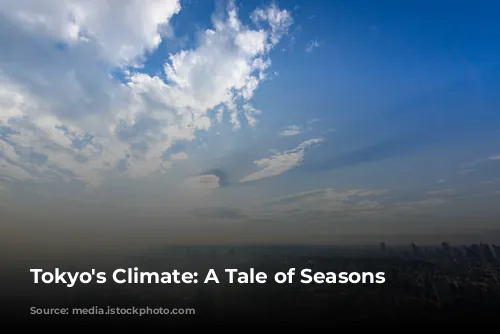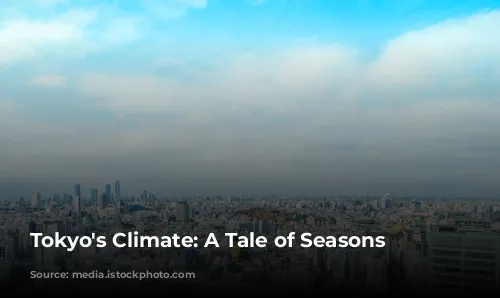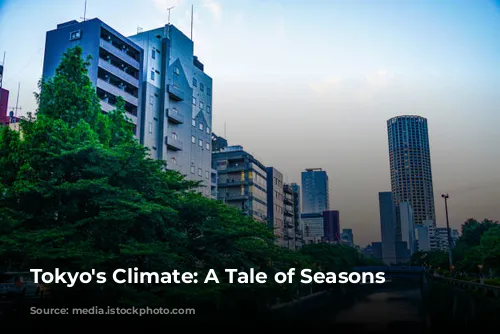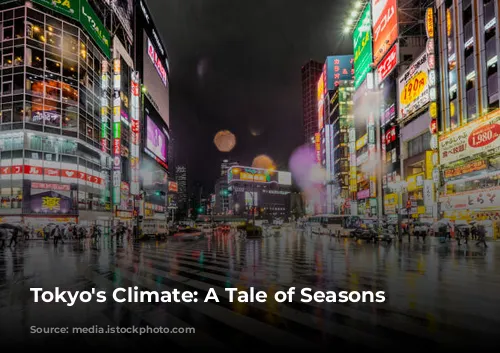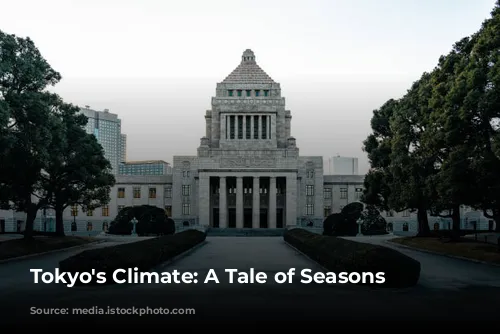Tokyo, despite being further south than Washington, D.C., shares a similar climate. The most uncomfortable season is summer, where humidity reaches extreme levels and temperatures can soar above 100 °F (38 °C). Even though August temperatures usually hover near 90 °F (32 °C), it’s the intense humidity that truly makes the difference. Winters, on the other hand, are crisp but not brutally cold. While heavy snowstorms do occur, they usually hit in early spring and melt quickly. Temperatures may dip below freezing, but only slightly. Winter is the sunniest season and boasts the clearest air, offering the best chance to spot Mount Fuji from a high building in the city center. Spring and autumn are delightful, though the weather can be more unpredictable compared to Washington. There are rainy periods in early summer and early autumn, with the latter often associated with typhoons, the Pacific version of hurricanes. It’s uncommon for a year to go by without at least one typhoon striking the region. The blooming flowers of spring and the vibrant autumn leaves have long been celebrated in Japanese poetry. May, with its peonies, azaleas, wisteria, and dogwood, is the most floral month, even though the famous cherry blossoms arrive earlier in April. Plums, camellias, and witch hazel bloom even earlier, ensuring the city is never devoid of outdoor blossoms, even during the coldest winter months.

Tokyo’s Transformation: From Villages to a Sprawling Metropolis
Western visitors in the 19th century described Edo, the old name for Tokyo, as a collection of villages rather than a cohesive city. This description was documented in detailed accounts, such as the one written by an American who accompanied Ulysses S. Grant on his visit to the city in 1879. While this characterization was likely accurate a century ago, the term “city” is now more appropriate. The center of Tokyo remains largely the same as Edo’s, immediately east of the palace. Marunouchi, a district within the former outer castle moat, is the entrepreneurial hub of the city and Japan. It housed the prefectural offices until 1991.
To the east, beyond the avenue built on the filled-in moat, there’s a shift in the city’s character. Nihonbashi, the “Japan Bridge,” historically considered the starting point for roads to the provinces, was the undisputed commercial center of Edo. Today, Ginza, located further south, holds greater prominence despite not being the largest retail district in the city. Kasumigaseki, situated south of the palace, has been the bureaucratic heart of the city since it became the imperial capital. This district, along with neighboring areas to the west, is where the main national government offices reside, including the National Diet Building and the prime minister’s residence.
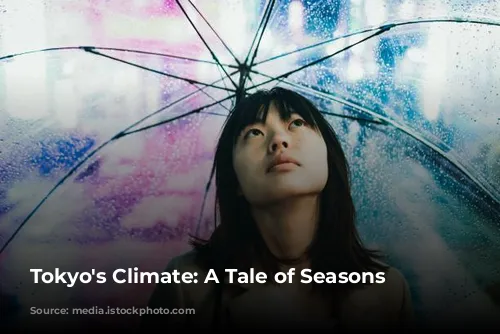
Tokyo’s Expansive Growth: Satellite Centers and a City in Motion
Beyond the city center, Tokyo has witnessed a remarkable proliferation of “satellite centers,” each one deserving of the title “city,” rivaling even the likes of Kawasaki and Chiba. Shinjuku stands as the largest, serving as the main retail and entertainment district in the city and the entire country. More people pass through Shinjuku railway station than any other station in Japan, possibly even the world, as commuters traverse the sprawling western suburbs.
Following closely behind, Shibuya, popular among teenagers, is second, while Ikebukuro, located north of Shinjuku, comes in third. These three centers are all situated along the Yamanote Line, the railway that circles much of the city’s central core. Their growth reflects Tokyo’s westward expansion. Other noteworthy centers include Ueno, west of the Sumida River, and Nakano, west of Shinjuku. Even Yokohama, a separate city, has become a significant hub for shopping, conventions, and more, despite its declining traditional role as the port for greater Tokyo. The beautification of Yokohama’s nondescript waterfront has been a remarkable success. While Chinatowns are numerous in Tokyo, Yokohama stands out with its genuine and vibrant Chinatown.
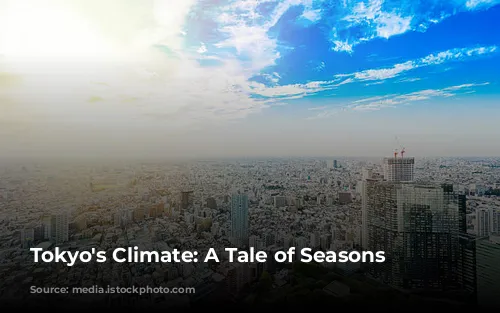
Navigating Tokyo: A Labyrinth of Streets and a Legacy of Edo
Despite modernization and disasters, the street pattern of central Tokyo mirrors that of Edo. While old streets have been widened and new streets have been carved out, the city has retained its basic shape after the major disasters of 1923 and 1945. The old city center is like a spiderweb, with the palace grounds at its center, reflecting the defensive design of the former castle town. The flatlands to the east follow a grid pattern, but these grids don’t always connect seamlessly.
One might expect a city to become more structured as it grows, but this isn’t true of Tokyo, and even less so for the suburbs beyond the city’s boundaries. There’s no grand plan or consistent pattern except, in a rudimentary sense, the old cobweb. Streets wind through valleys and ridges, often reflecting the disordered landscape of the former paddy fields. The cobweb pattern survives in main arteries that radiate out from the city center, leaving through post stations known as the Five Mouths. The most significant of these was Shinagawa, to the south, marking the first of the 53 stages on the Tōkaidō, the main coastal road to Kyōto, celebrated in the woodblock prints of Hiroshige and others. It remains on the oldest and most important highway to Yokohama and beyond.
The old highway to the mountainous province of Kai (modern Yamanashi prefecture) passes through Shinjuku, directly west of the palace. Itabashi, to the northwest, though less important than it once was, still holds the old inland road to Kyōto. Senjū had two of the Five Mouths, with more than one highway leading north. Much of Yokohama resembles the western part of Tokyo, which is to say, confusing, with even more inconsistent streets than Tokyo. Motorists, overwhelmed by the random streets, have been known to get out of their cars and look for the North Star, though the air is rarely clear enough for such a guide.
The city is mostly hilly, and Japanese roads and streets often meander around hills in search of detours. Only a limited area south and west of the original Yokohama railway terminus (now Sakuragi-chō station) and the harbor area resemble a grid pattern. One searches in vain for remnants of the old Kanagawa post station in Yokohama, and the same applies to the post station in Kawasaki, north of Tokyo. Perhaps because it lost its castle centuries ago, Chiba lacks the medieval castle town feel that Tokyo has. Visitors have to be told where the castle once stood.
